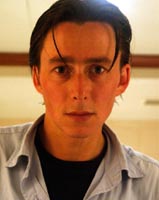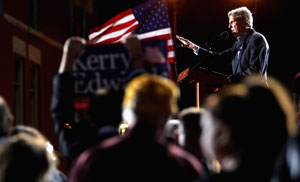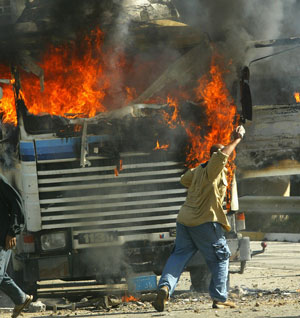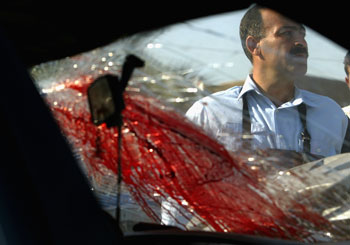 |
 | ||||||||||
A Pair of Eyes
January 2005
|
 |
|||||||||
|
"For I understand that a man is born into the world with his own pair of eyes, and he is not at all responsible for his vision -- he is merely responsible for his quality of personal honesty," said Stephen Crane in the late 1890's. While Crane's world of horse carriages and glass plate cameras shares little resemblance to our modern times, this bold decree has never sounded more pertinent than it does on the eve of 2005. As the flame of 2004 slowly begins to fade, its power and dynamism is overwhelming: Iraq, the U.S. presidential elections, Regan's death, Arafat's passing, Darfur, Beslan the chilling images from Abu Ghraib and then the Tsunami that hit the Asian coast on Christmas day. These were just some of the stories photojournalist pursued with unprecedented vigor in 2004. Maybe the attacks of September 11, 2001 changed the news cycle so significantly that I forgot what it was like to have a slow news year. Whatever the cause, the times we are living through and documenting are surely some of the most heartwrenching.
For me this moment arrived on an unseasonably warm evening in the town of Warren, Ohio. It was the last week of the campaign and Kerry and Bush were in a dead heat. As was customary, we were on a sixth stop of the day during a whirlwind tour of key swing states. While the crowds, flags and stages had long ago begun to appear the same, Warren had an intensity that evaded some of the other towns. It seemed every member of the community, from the town drunk to the fire chief, was in attendance and on the edge of his seat. While the introductions were read, the intensity of the crowd seemed to build to a breaking point. By the time Kerry approached the stage, slowed by the thousands of hands reaching for a piece of the man, Warren had been transformed from a sleepy, working class mid-western town to center ring in America.
But 2004 delivered much more than campaign stops and the independent voter; it saw the continuation and escalation of a most pernicious war. As photographers, 2004 confirmed that the Vietnam era combat photographs of Larry Burrows and Don McCulan are not simply a reminder of histories past, but harbingers of a foreign policy that is fated to endlessly repeat. Journalists were killed, maimed and kidnapped in unprecedented numbers in Iraq. The story has now become so hideous and dodgy that many prominent news organizations have opted to pull out altogether. We now receive much of our news from Iraq, both text and images, from local stringers and amateurs willing to take the risks while reporting from the region.
And now The Tsunami in South East Asia, where the numbers of dead are in biblical proportions. I am packing for this story. I do hope 2005 is a year of compassion.
© Spencer Platt
Dispatches are brought to you by Canon. Send Canon a message of thanks. |
||||||||||
Back to January 2005 Dispatches
|
|



